The chronograph watch, commonly defined by its sub-dials and stopwatch functionality, is a versatile timekeeping instrument with a rich history that spans centuries. Derived from the Greek words for “time” and “writer,” the chronograph has played an integral role in various fields, including sports, aviation, and scientific exploration. Today, chronograph watches are some of the most favorite timepiece styles out there, prized for their sporty looks and association with motorsports. Keep on reading as we delve into part one of our two-part history of chronograph watches.
Early Chronograph Watch History
In 1816, Louis Moinet invented the first-ever pocket watch with chronograph capabilities. However, he referred to it as the “compteur de tierces,” (meaning “thirds counter” in French,) rather than using the term “chronograph” and it was invented for astronomy (timing the passage of stars and planets) rather than racing.
Surprisingly, it was not until 2013 that Louis Moinet received credit for this groundbreaking invention. Jean-Marie Schaller, the current CEO of the Louis Moinet watch brand, presented evidence proving Moinet’s role as the true inventor of the chronograph watch.
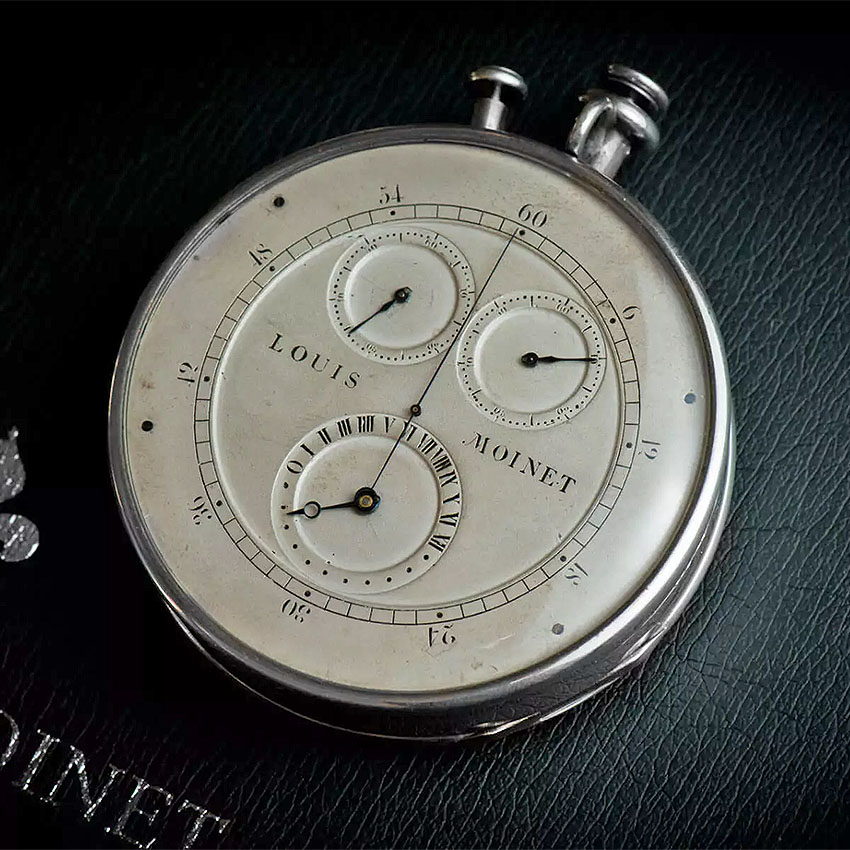
Before this revelation, Nicolas Mathieu Rieussec was widely believed to be the inventor of the chronograph. Rieussec developed a pocket watch chronograph for King Louis XVIII in 1821, specifically for timing horse races. Therefore, while Rieussec’s creation is not the first chronograph it can be considered the first purpose-built racing watch, as it marked the start and finish of elapsed time by depositing ink on a rotating dial. This origin story explains the name “chronograph, derived from the Greek words “chronos” (time) and “graph” (writer), i.e., “timewriter.”
In 1844, Swiss watchmaker Adolphe Nicole patented a simplified version of the chronograph that integrated the start, stop, and reset functions into a single push-button mechanism.
In the 1880s, Edouard Heuer — the founder of what we now know as TAG Heuer — recognized the importance of accurate pocket chronographs for increasingly popular sporting events, so he began producing them in large numbers.
From Chronograph Pocket Watches to Chronograph Wristwatches
Following several key advancements in chronograph technology in the late-1880s to the turn of the 20th Century, one of the biggest shifts in the history of the chronograph happened with the transition from pocket watches to wristwatches during the early-1900s.
For instance, Longines introduced the Caliber 13.33Z in 1913, which was one of the first chronograph movements ever developed for a wristwatch. The crown served not only to wind the watch but also as a pusher to control the chronograph; first push to start, second to stop, and third to reset.
In 1915, Gaston Breitling (the son of the founder of Breitling watches) continued his father’s ambition of making top-notch chronographs by creating one of the world’s first wrist-worn chronographs with an independent chronograph pusher. Then, Gaston’s son, Willy Breitling introduced the first two-pusher chronograph wristwatch in 1934—one pusher to start and stop the chronograph hand and the other to reset it to zero, which is the same architecture we find on most of today’s modern chronographs.
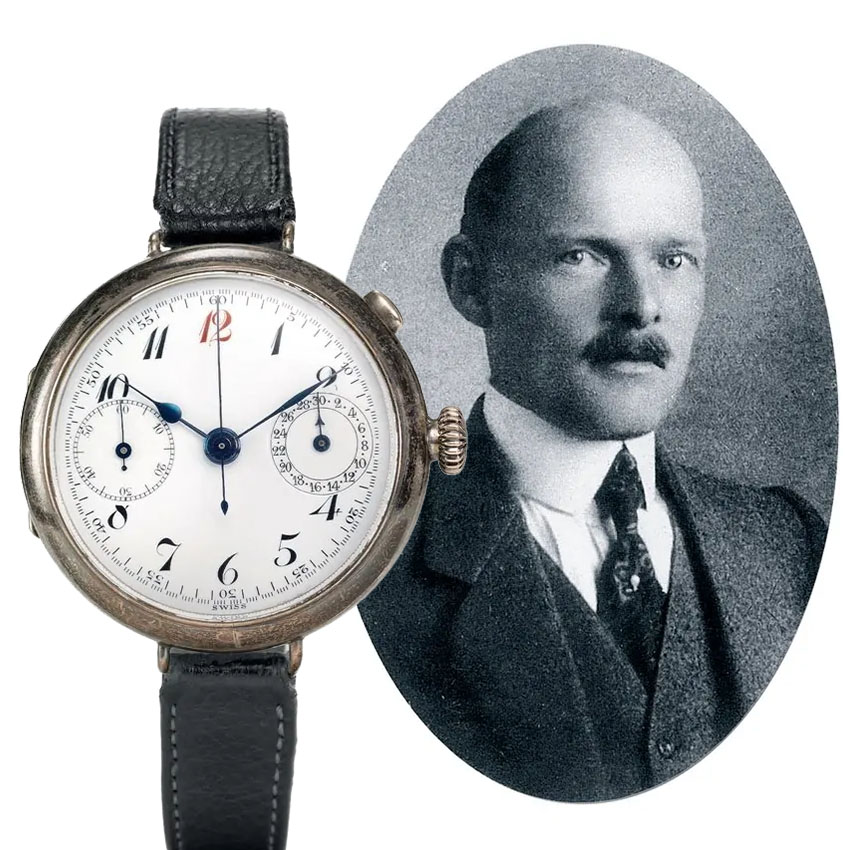
Jumping back to Longines, the company was granted a patent for the flyback chronograph mechanism (where the chronograph hand can be reset without having to stop it first) in 1936.
Wristwatches played an important role during World War II and watchmakers began supplying accurate timepieces to the armed forces. The German Air Force (the Luftwaffe) supplied some of its pilots with chronograph watches, also known as Flieger chronographs.
Post-World War II Chronographs
Post-World War II witnessed the birth of some of the most iconic chronograph watches ever made – many of which remain exceedingly popular today.
In the early-1950s, Breitling made a special chronograph watch for the members of the US Aircraft Owners and Pilots Association (AOPA). Thanks to the watch’s innovative rotating slide rule bezel, wearers could perform vital flight calculations such as average speed, distance traveled, fuel consumption, rate of climb or descent, and measurement conversions. This chronograph was later sold to the public as the now-famous Breitling Navitimer.
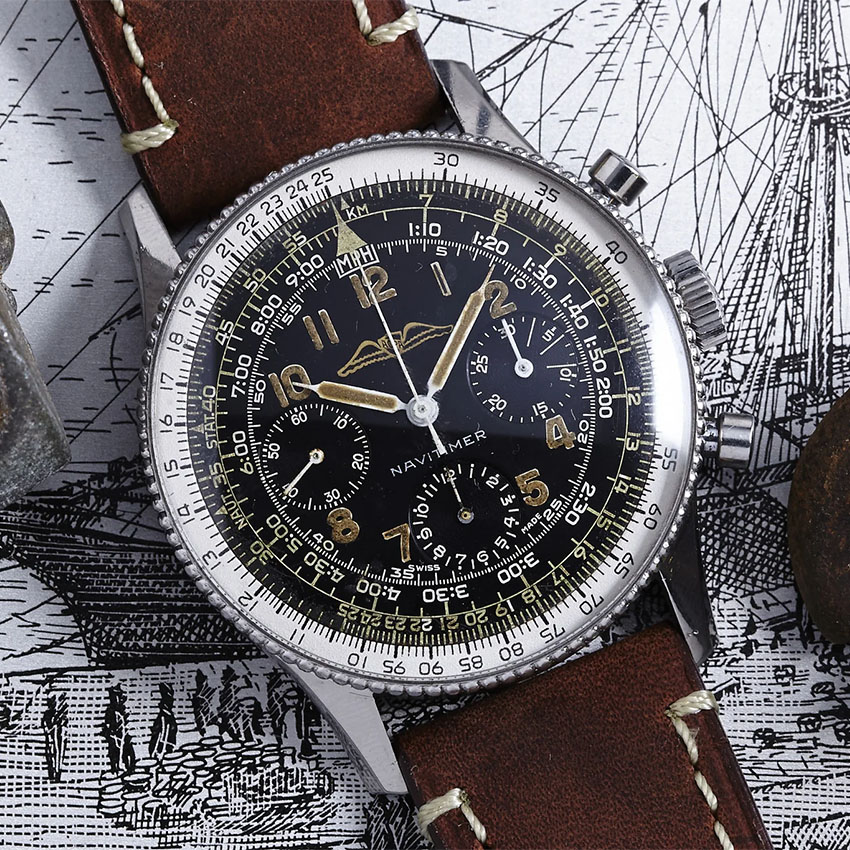
Omega released the Speedmaster chronograph in 1957 as the first to feature the tachymeter scale on the bezel rather than the dial for better legibility. While the Speedmaster chronograph was originally designed for racing (it’s in the name!), the watch became inextricably linked to space exploration after it became the first watch to make it to the Moon during the Apollo 11 mission in 1969. As such, the Speedmaster is affectionately known as the ‘Moon Watch’.

Named after the Carrera Panamericana car race, Heuer released the Carrera chronograph in 1963. The Carrera chronograph remains a staple in TAG Heuer’s catalog. That same year, another chronograph made its debut, the Rolex Cosmograph Daytona—arguably, the world’s most famous chronograph watch. However, when Rolex first launched the Daytona, it was far from popular; in fact, it was one of the company’s slowest-selling models. That would eventually change, of course, but not before a very important milestone occurred in the history of the chronograph: the introduction of the automatic chronograph.
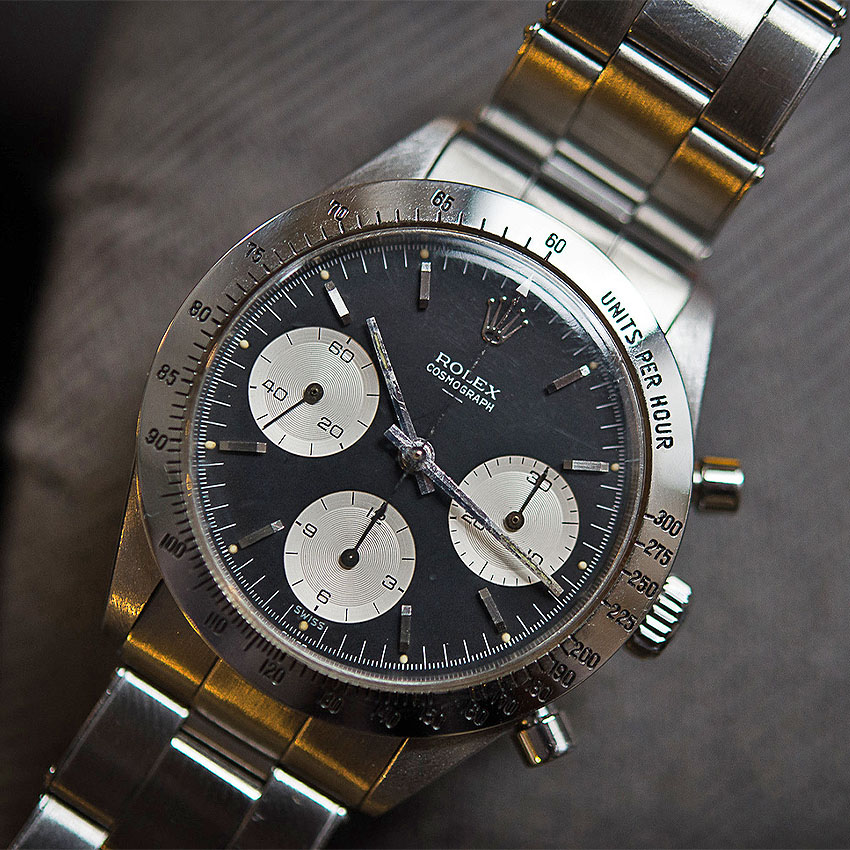
The Battle to Make the First Automatic Chronograph
1969 was a pivotal year in horology as it was when the automatic chronograph movement burst onto the scene. While it is still up for debate on which company can lay claim to the very first automatic chronograph, there are some key pioneering watch brands to note.
Zenith would be the first to make headlines by announcing its automatic El Primero chronograph movement (the same that would power Rolex Daytona chronographs from the late 1980s until 2000) in January 1969. Yet, the company presented working prototypes and not ready-for-sale models.
Seiko released the automatic Speedtimer chronograph watch in May of that same year; however, it was limited to the Japanese market.
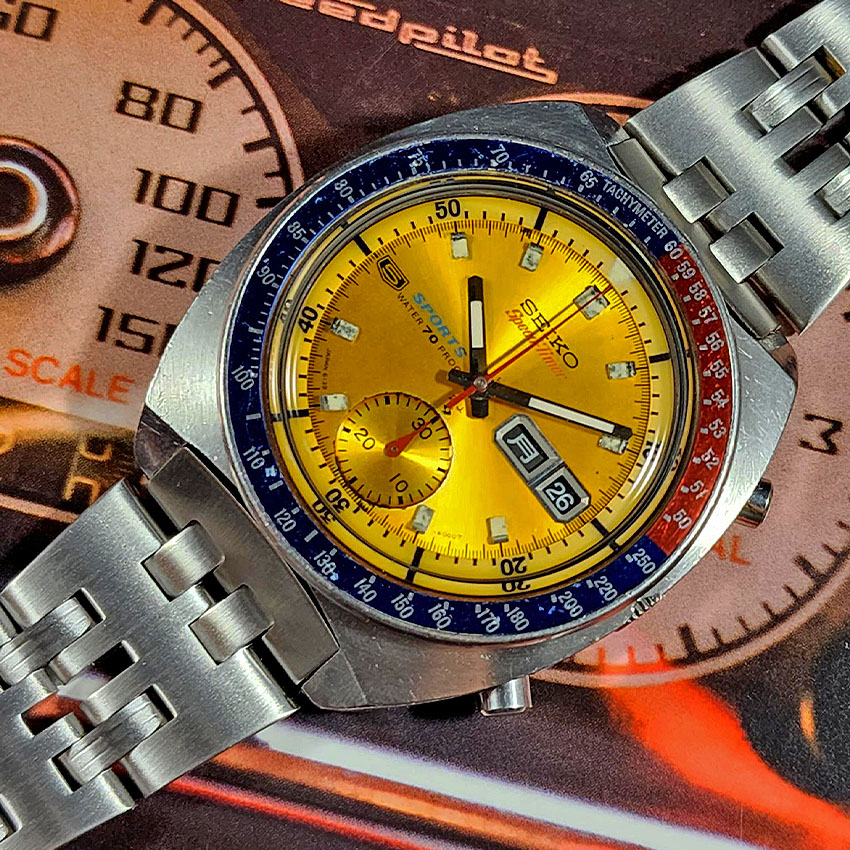
Then, in August of 1969, a group of esteemed watchmakers consisting of Breitling, Buren, Hamilton, Heuer, and Dubois-Depraz unveiled a slew of automatic chronograph watches, all powered by the Chronomatic movement they collaborated to develop.
Ironically, the year that brought about one of the biggest innovations in mechanical watchmaking was the same one that saw the arrival of its destruction: the Seiko Astron quartz watch, which launched on December 25, 1969.
Quartz Era Chronographs
As previously mentioned, Seiko introduced the world’s first quartz watch with the Astron in 1969. That kicked off what we now know as the Quartz Crisis or Quartz Revolution, depending on your perspective. It wasn’t long before quartz chronograph watches began taking over from mechanical chronographs, particularly ones with digital displays as these were considered super futuristic and high-tech.
In 1975, Seiko launched the 0634, the world’s first multifunctional digital quartz watch that included a chronograph function. In 1977, Seiko began mass producing the A159 digital quartz watch, which had an alarm and a chronograph, thereby advancing multi-functional digital watches. While Seiko was certainly a pioneer in the space, it was not the only one making quartz chronographs in the 1970s and 1980s.
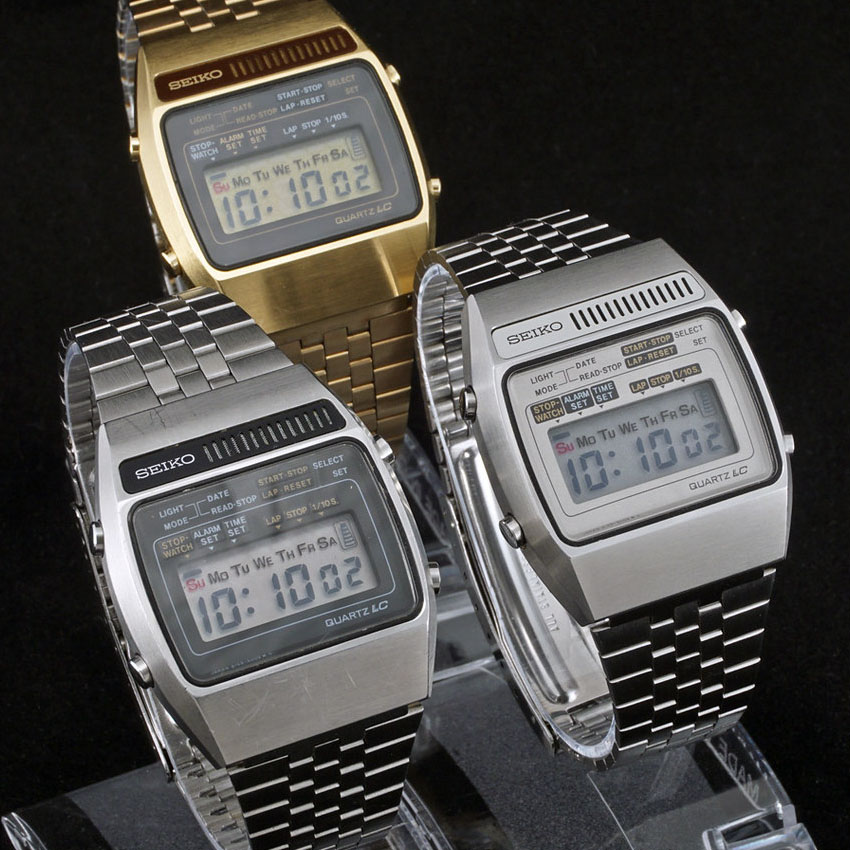
Heuer introduced the Chronosplit in 1975, which included two digital displays: an LCD (Liquid Crystal Display) display on top and an LED (Light Emitting Diode) display below. Omega chose the 1976 Montreal Olympics to unveil the Omega Chrono-Quartz, the world’s first digital/analog chronograph. Then Breitling released the quartz LED Navitimer ref. 9016 in 1977.
The multifunction G-Shock by Casio hit the market in 1983, Breitling introduced the famed Aerospace watch in 1985, and Timex launched its first analog-digital hybrid multi-function watch in 1987.
An important milestone in the history of the quartz chronograph occurred in 1983 when Seiko introduced the 7A28 movement as the world’s first quartz chronograph movement with an analog display. This concept really took off as chronographs could benefit from the combination of traditional looks and the practicality and affordability of quartz movements.
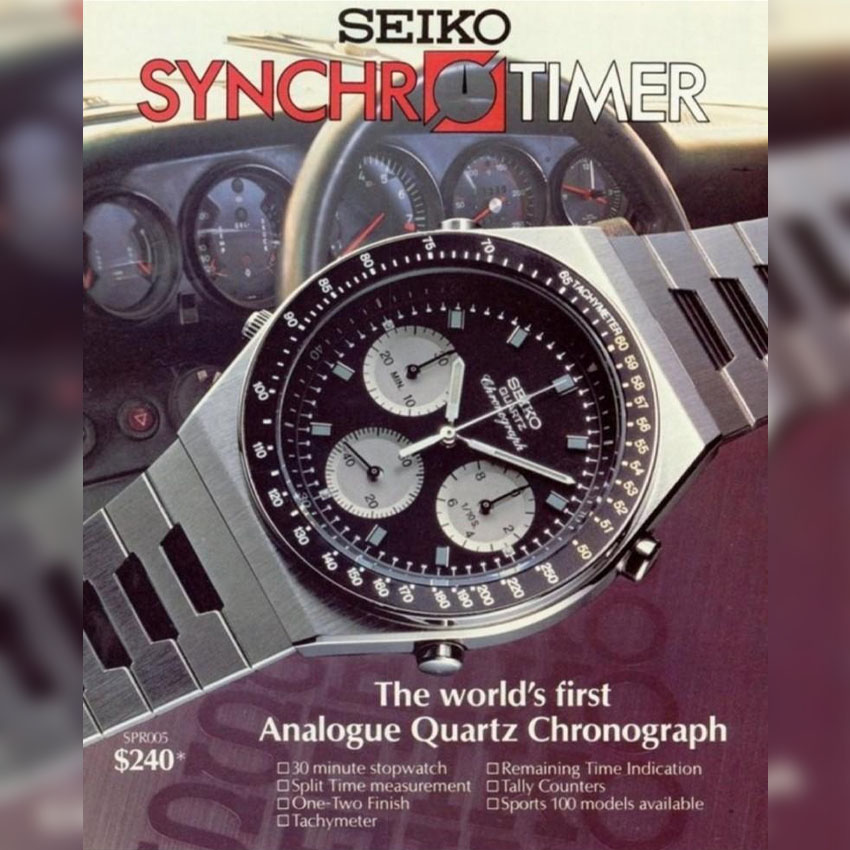
Heuer unveiled quartz versions of its Pilot Chronographs in 1983 and in 1986, the newly-renamed TAG Heuer launched the Formula 1 collection with a vast assortment of affordable Swiss-made quartz watches and chronographs. Omega released several Seamaster Polaris chronographs powered by quartz movements during the 1980s. The first Swatch chronograph appeared in 1990. And in the mid-1990s, Citizen debuted its light-powered Eco-Drive line of watches including chronographs.
As quartz movements were sweeping through the watch industry, several watchmakers were also pushing mechanical chronographs to ensure that these traditional timepieces didn’t disappear forever.
Mechanical Chronographs in the 1980s and 1990s
In 1983, Breitling launched a specially designed automatic chronograph for the Italian Frecce Tricolori Jet team – it had to be mechanical because as we mentioned quartz chronographs with analog displays hadn’t taken off yet. And the design of the Breitling Frecce Tricolori paved the way for the brand’s highly successful Chronomat chronograph collection.
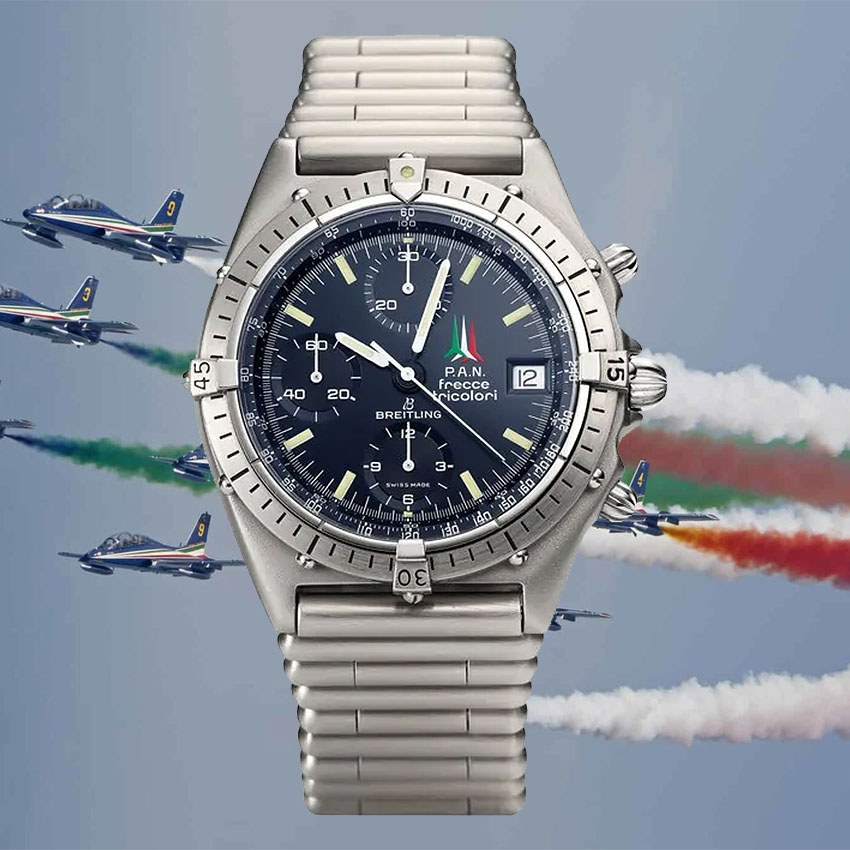
Many point to the 1985 introduction of the IWC Da Vinci Perpetual Calendar Chronograph as the moment when the watch industry began its comeback to complex mechanical movements, which often included pairing chronographs with other complications.
In 1988, Rolex finally launched the automatic Daytona chronograph collection and discontinued the manual-winding versions. These early automatic Daytona chronographs were powered by Zenith El-Primero movements.
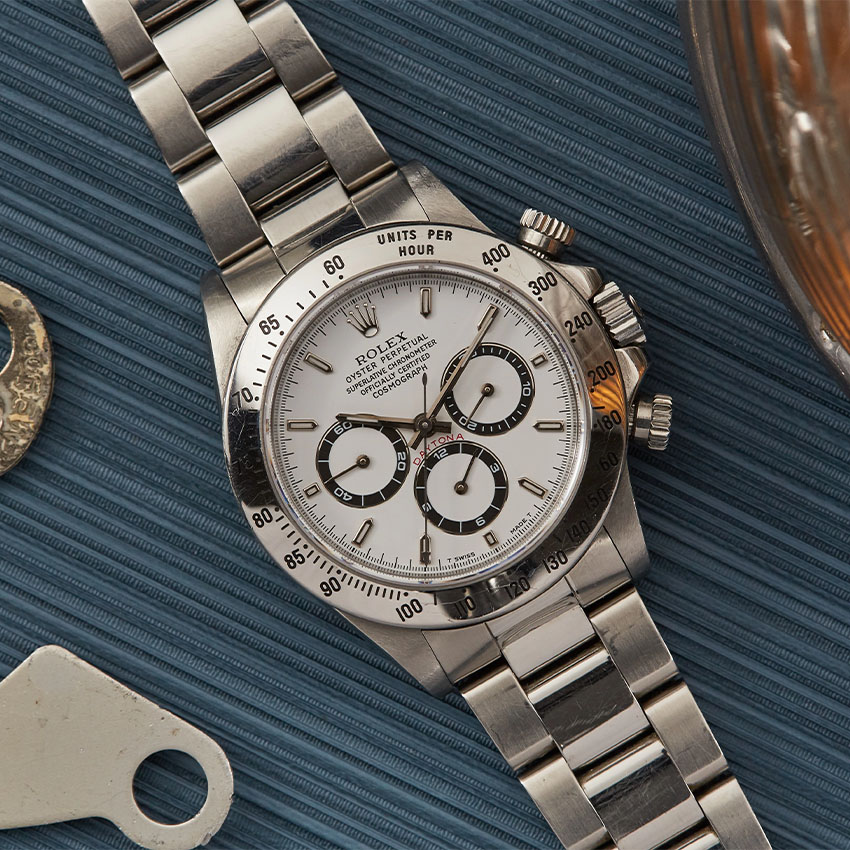
That same year, movement maker Frédéric Piguet unveiled the Caliber 1185, an ultra-thin automatic chronograph movement with an upscale column-wheel and vertical-clutch design. This movement eventually found its way into some famed chronographs such as the Audemars Piguet Royal Oak Chronograph (first launched in 1998), Vacheron Constantin Overseas Chronograph (first launched in 1999), Breguet Marine Chronograph (introduced in the mid-1990s), and others.
One of the most famous chronographs known today is the Audemars Piguet Royal Oak Offshore, launched in 1993.
In 1999, A. Lange & Söhne made waves with the launch of the Datograph, which was powered by an in-house chronograph movement built from the ground up. This move paved the way for many other high-end watchmakers to pursue making their own in-house chronograph movements rather than following the tradition of relying on ébauche movements.

The In-House Mechanical Chronograph Movement Boom of the 2000s & 2010s
A significant shift that happened during the 2000s and 2010s in the history of the chronograph was high-end watchmakers racing to launch their own manufacture chronograph movements. Here are some of the highlights.
In 2000, Rolex launched a new generation of automatic Daytona chronographs, all powered by the in-house-made Caliber 4130

In 2004, Jaeger-LeCoultre announced the in-house Caliber 751 automatic chronograph movement.
In 2005, Patek Philippe finally introduced its first fully in-house chronograph, which was the monopusher rattrapante reference 5959P powered by the Caliber CHR 27-525 PS.
In 2007, IWC released the Caliber 89000, which was a flyback integrated chronograph movement that can be combined with other complications.
That same year, Piaget introduced its first in-house chronograph with the Caliber 880P, which eventually severed as the base of the Caliber 883P — one of the world’s thinnest chronograph movements ever made.
In 2009 Breitling released the B01 movement, its first in-house automatic chronograph movement. In 2011, Omega launched the in-house made Caliber 9300 chronograph movement with a Co-Axial escapement.
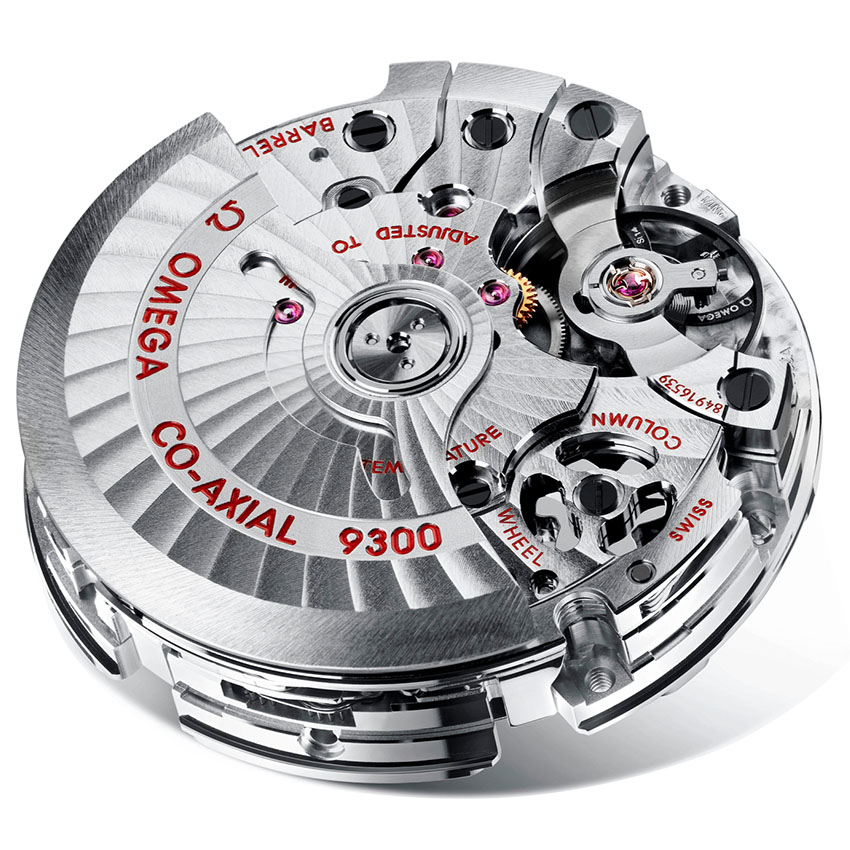
In 2013, TAG Heuer announced the Caliber 1969, which many agree is the brand’s first true in-house chronograph movement as there were some controversies around the origins of the TAG Heuer Caliber 11 and Caliber 1887 movements. That same year, Cartier presented its first in-house chronograph movement that served to power the Calibre de Cartier Chronograph watches.
In 2015, Vacheron Constantin unveiled three in-house chronograph movements in the Harmony collection: the Caliber 3300 Monopusher, the Caliber 3500 Ultra-Thin Grande Complication Chronograph, and the Caliber 3200 Tourbillon Chronograph.
Hard to believe, but Audemars Piguet’s first in-house-made chronograph movement only appeared in 2019 with the introduction of Caliber 4401, which debuted in the CODE 11.59 line but has since rolled out to other collections like the Royal Oak.
In 2019, Bulgari broke records by introducing the Octo Finissimo Chronograph GMT, the world’s thinnest mechanical chronograph.
Chronograph Watches Today
It’s no secret that chronograph watches are some of the most popular watch styles in today’s market, whether they’re powered by quartz, manual, or automatic movements. Not only are they available in a variety of price points but they’re also offered in countless styles.

What’s more, chronograph functions are often paired with other types of watch features such as calendars, multiple time zones, diving bezels, and in some cases, super high-end complications such as tourbillons, minute repeaters, and astronomical displays.
Regardless of your taste, budget, or wrist size, there’s certainly a chronograph watch out there for you.
Do you have a favorite chronograph watch that you own? Or is there one you’re looking to add to your collection eventually? Share your comments with us below.


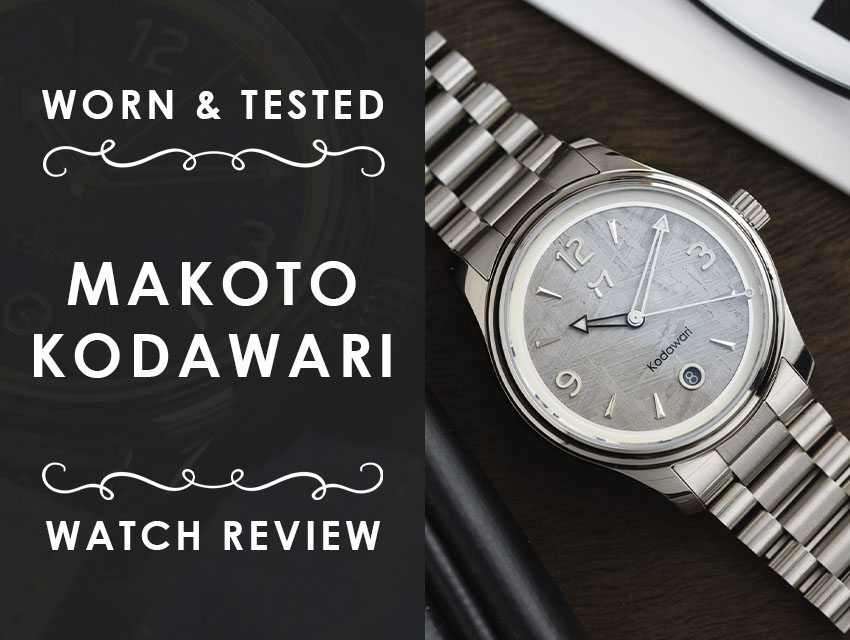




Comments
Your articles are great and educational for aspiring watch-a-holics such as myself.
Keep up the good work!
Good article, any thoughts of adding some background to fill the gap prior to the Breitling and Omega, such as the Landeron 251 no-pusher chronograph?
Excellent, concise and well documented Chrono review. Congrats